My Day: Prakash the Bharatpur bird guide
- Published
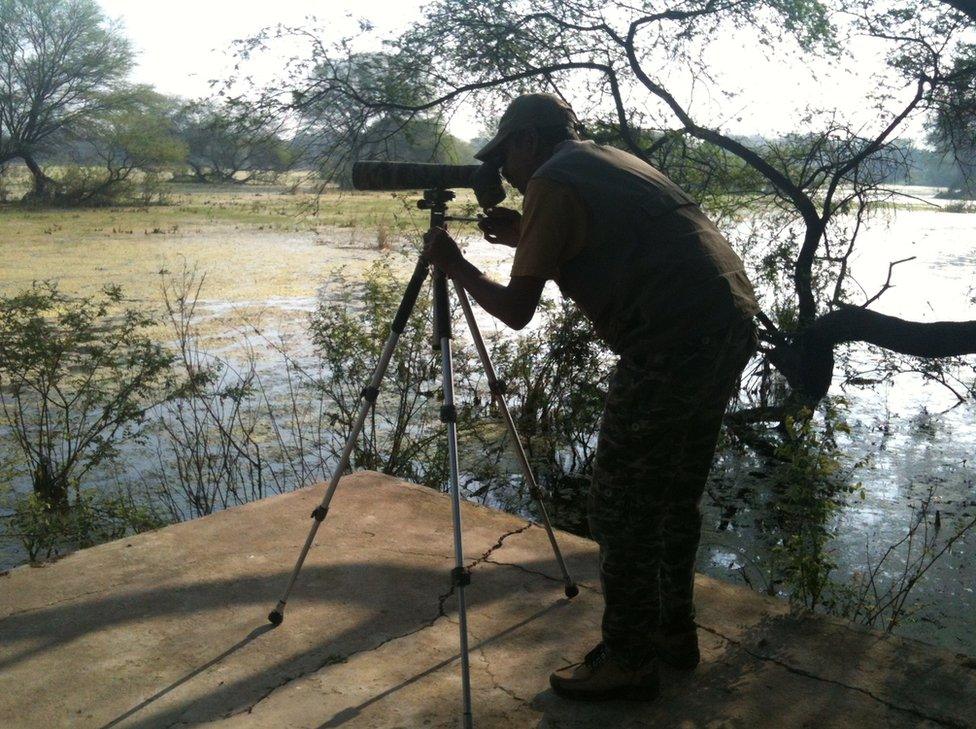
Bharatpur bird sanctuary near India's capital Delhi is a haven for many species of wildlife. In winter the Unesco-recognised reserve - also known as Keoladeo National Park - becomes an important stopping point for thousands of migratory birds. Prakash Chand Gotam, one of the sanctuary's resident guides, tells the story of the park.
I have been working here in Bharatpur for a very long time!
My father was also posted here - but he's now retired.
There are a total of 375 bird species in the park. Mostly, I am a bird specialist - we are known as naturalists. In the park there are 91 of us naturalists. We have more detailed knowledge of the birds compared with the other guides in the reserve.
You need naturalists or visitors can get confused and pick up the wrong information.
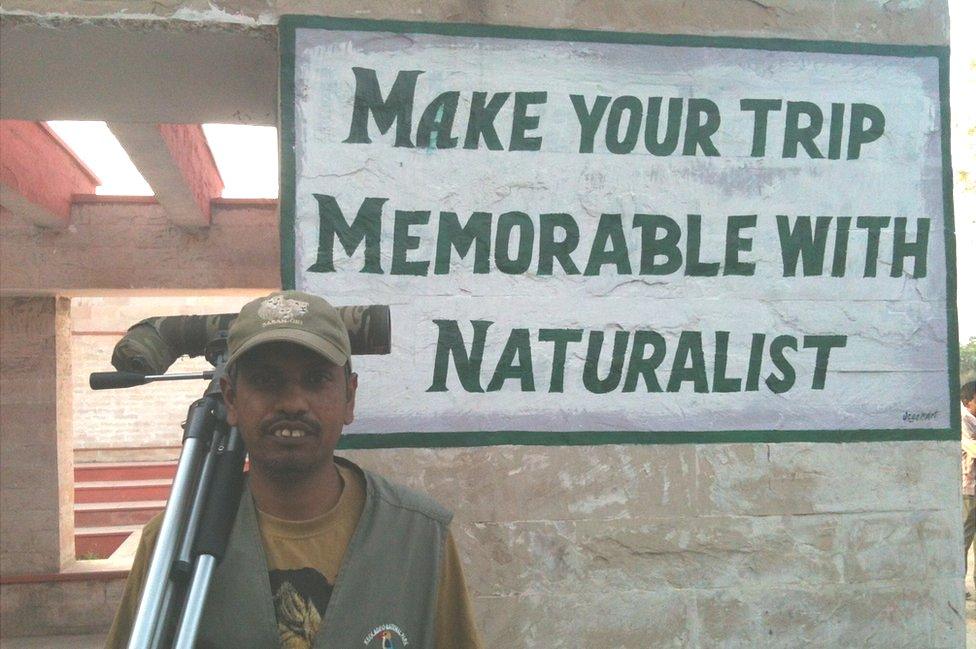
Prakash has been working at Bharatpur for about 15 years
I come to work at 6am every day. Winter time is the busiest for visitors, when Bharatpur is full of migratory birds. Every day is busy between October and March. By April there are fewer birds here and few tourists come. Winter is the best!
In April, May, June and July I mostly work on the farm, but by August some tourists start to return.
We don't get paid by the government - all the money we make is from guiding visitors. My normal working day ends at 6pm.
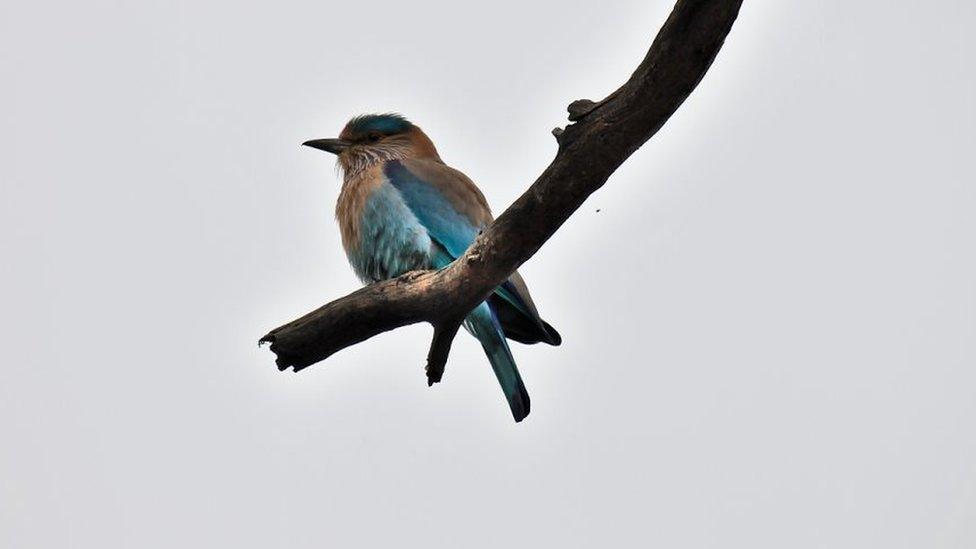
Species like Indian rollers can be seen all year round in Bharatpur
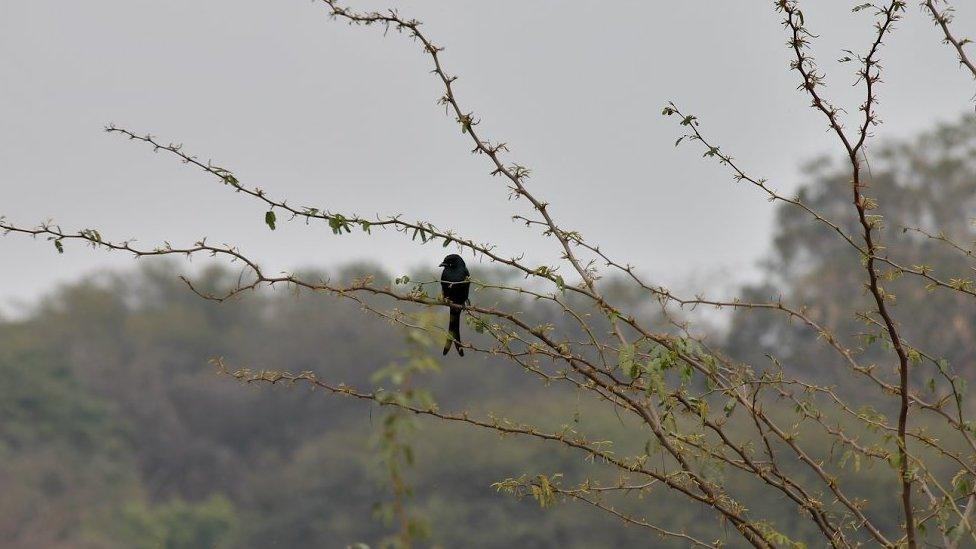
So can the black drongo
There are many rare species here - and some we don't see anymore. I last saw a Siberian crane here in 2001.

Siberian cranes
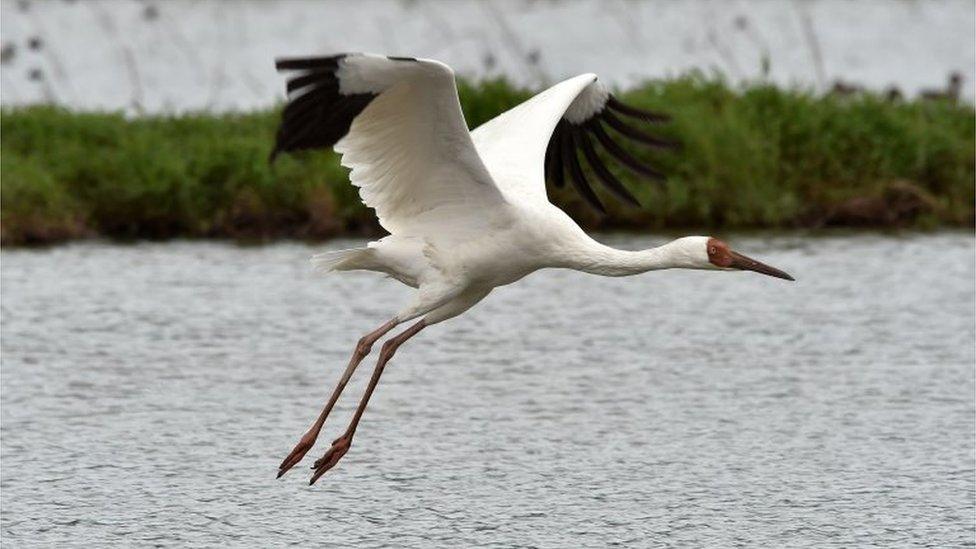
Also known as the Siberian white crane or snow crane
Critically endangered
Migrates further than any other crane
Eastern population lives in the Siberian Arctic tundra and the western population lives in western Russia
Numbers so low because of illegal hunting along migration routes and habitat degradation, especially in the western population
Eastern population had 95% of the estimated 3,200 birds in 2010 and migrates in winter to China
Western population once migrated to South Asia but now heads to Iran
Last sedge of Siberian cranes was seen at Bharatpur in 2001 - unlikely to be seen again in India until numbers rise

There are lots of other rare species too - the Siberian rubythroat is very rare here, and there are nightjars.
You also find the Brahminy starling (Brahminy myna) at Bharatpur. It has the hairstyle of a Brahmin, a holy man, with a yellow body. People joke that Sanjay Dutt the movie star has the same hairstyle.
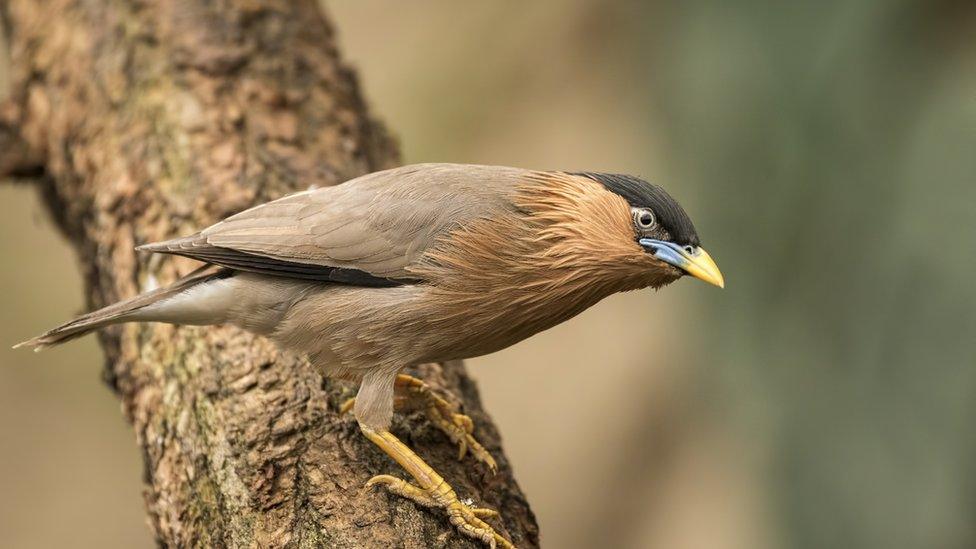
The Brahminy starling is a Bharatpur character

Judge for yourself.... here's another character, Sanjay Dutt
You can also see spotted owlets - I can make the call of the spotted owlet! It has a brown body and white spots.
I've also seen the Steppe eagle here, as well as booted eagles and greater spotted eagles. You've maybe even got a chance of a marsh harrier.
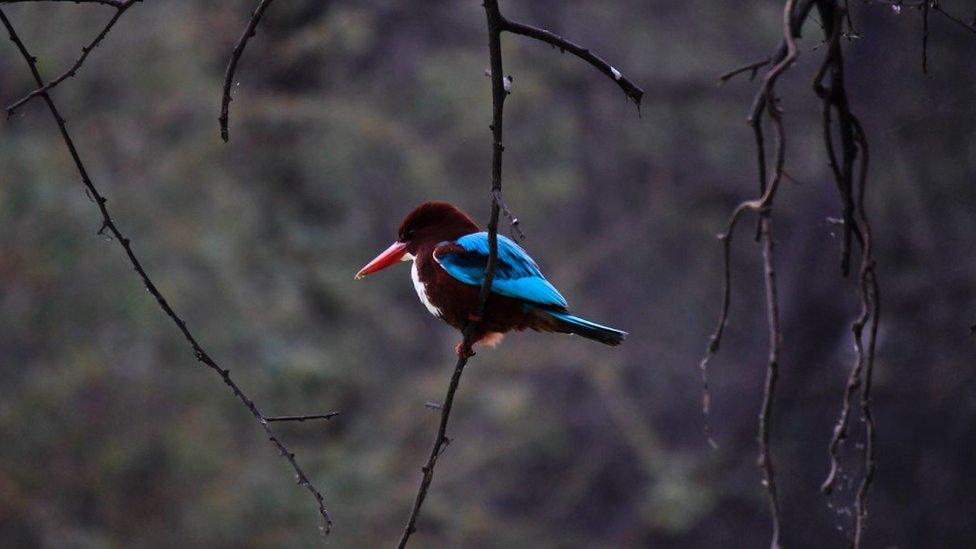
White throated kingfishers are a regular feature at Bharatpur
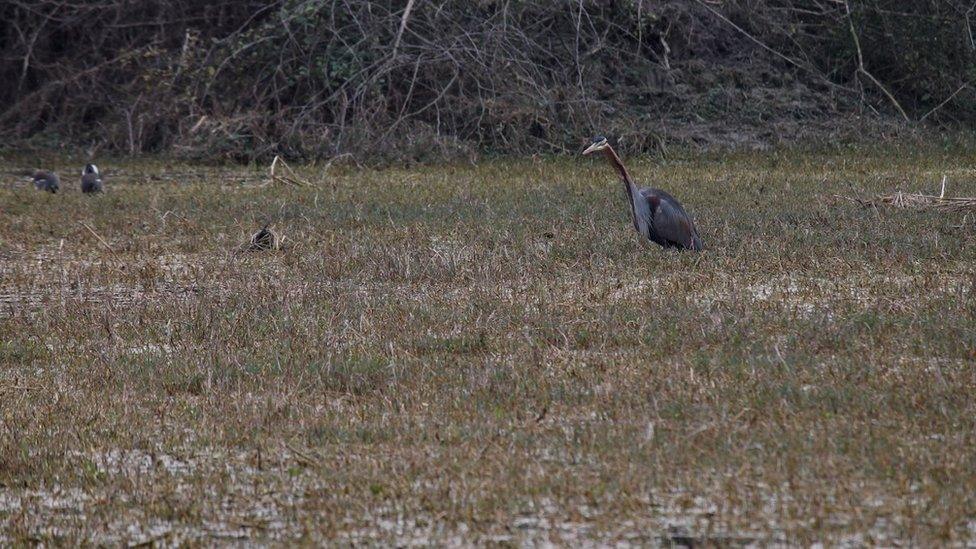
So are purple herons...
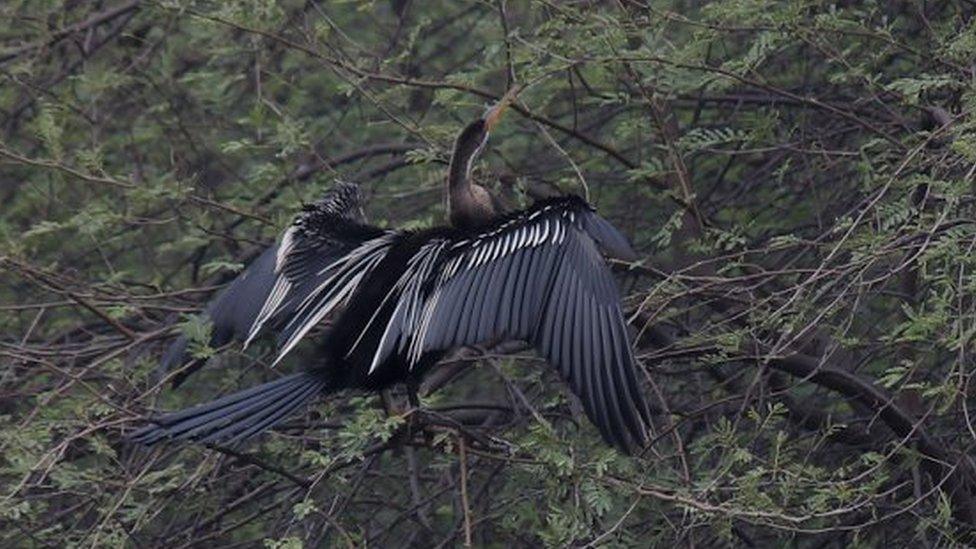
... and darters, or snakebirds as they are also known
In birdwatching the call is very important - you have to use the ear and the eye. Without the ear there is nothing. Sometimes you can see a bird just by hearing its sound.
You need hearing, a good eye - and learning.
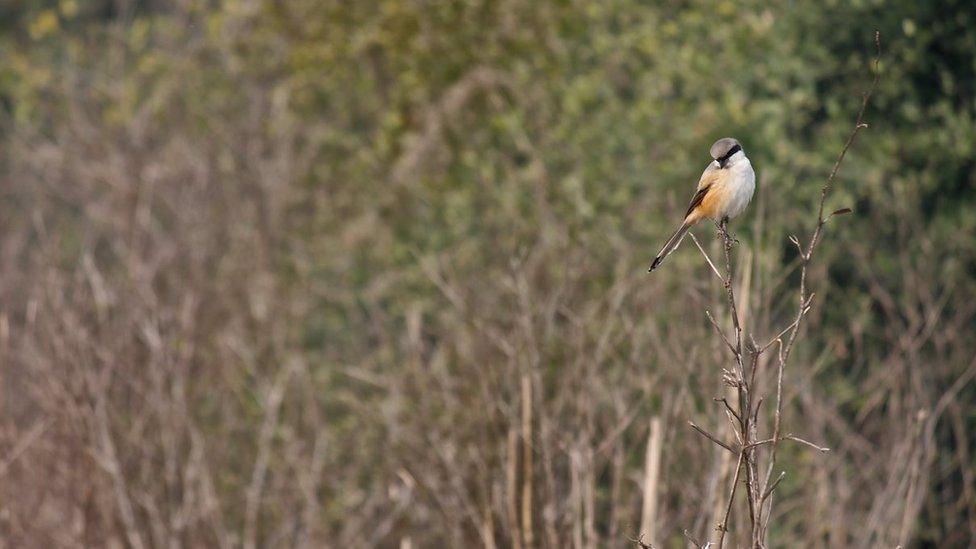
Here a rufous backed shrike or long tailed shrike waits patiently...
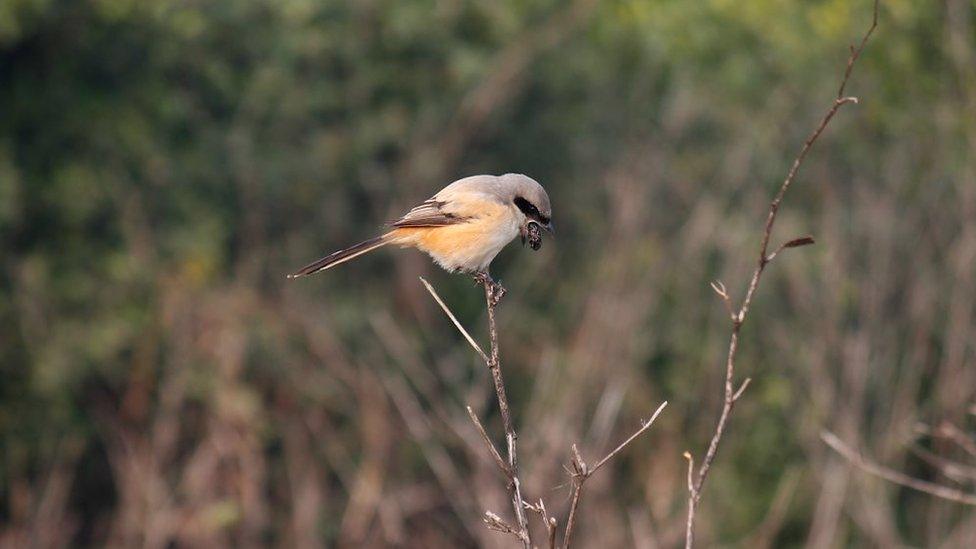
... before catching a meal flying by
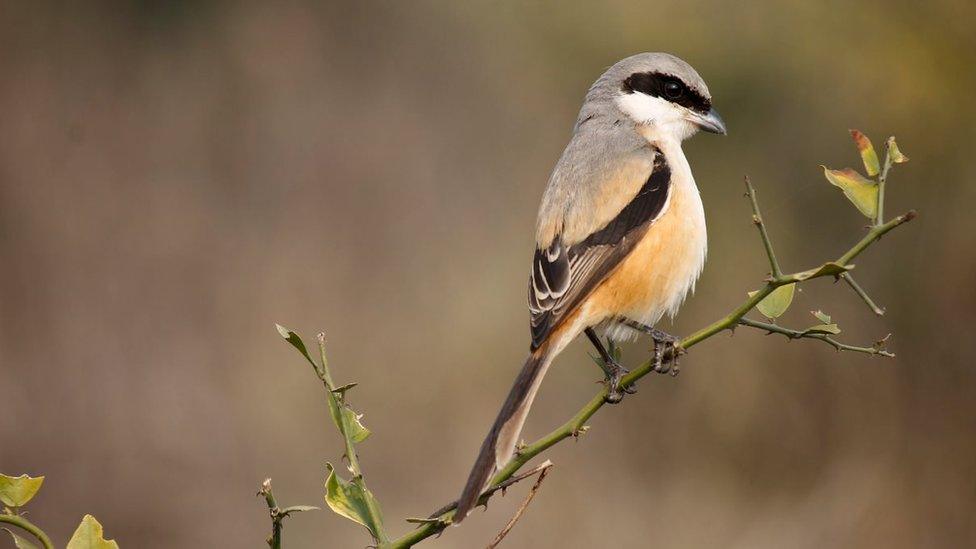
Bon appetit!
The long-billed vulture is finished here because of pesticides. The vultures would eat the carcasses of dead cows and be poisoned. The kind of tall trees the vultures went in are also no longer here.
With habitat finished, so are the vultures. There are different species of vultures still in India - at Jim Corbett park and Ramnagar, and about 50km (30 miles) from Bharatpur - and long-billed vultures are at Nainatal. You also sometimes get king vultures there - but the only vulture these days at Bharatpur are Egyptian vultures.
I've got many favourite birds at Bharatpur - painted storks are a very beautiful colour. Flamingoes too. And another one is the pintail, a beautiful duck. and also the common kingfisher.
Professional birdwatchers come here with their lists. Raj Singh is one. He is an ornithologist who was born at Bharatpur. He is very famous. Different tour companies come too.

Snakes, cats and hornbills - other Bharatpur residents
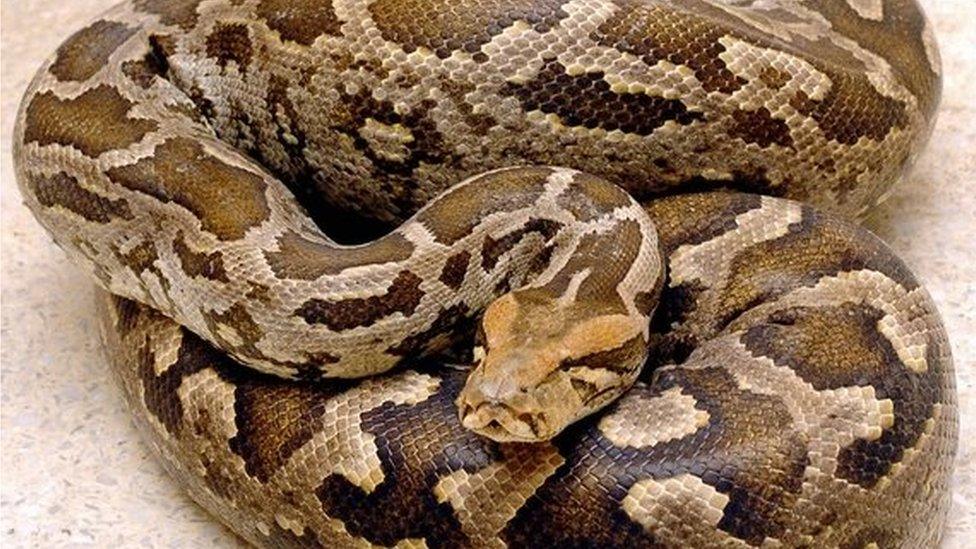
The jungle cat (or swamp or reed cat) is native to southern, middle and eastern Asia, although small populations also live as far west as Egypt. Common in India, jungle cats are a medium-sized cat with small tufts on their ears - which is why jungle cats are sometimes described as lynxes. However, they are a species of cat, not lynx.
Indian rock pythons grow to about 3m long (9ft 10in) and are native to South Asia. Lighter than Burmese pythons, they live in deep burrows. Like all snakes, which are "cold-blooded", they have to sunbathe early in the morning to warm up. That's when to look for them.
Goliath heron, or giant herons, are like purple herons - only bigger, much bigger. In fact these are the largest herons in the world and are as high as a family car with a wingspan of up to 2.3m (8ft). Like other herons, the goliath heron eats fish, frogs, toads and newts - but will sometimes eat ducklings and even water mammals.
The Indian grey hornbill is a medium-sized hornbill that is a rusty grey colour and reasonably common in the subcontinent. Like many hornbills, Indian greys live in holes high up in trees out of harm's way. Their beaks are their most distinctive features, making them easily identifiable.
The king vulture is a rare but unmistakable sight at Bharatpur, with an array of intense colours on the loose skin around its head. Similar to other vultures, the king vulture soars high in the sky, looking for leftovers from abandoned kills to scavenge.

Lots of tourists already know the birds, but without the naturalists in the park they get nothing. About 90% of people hire a naturalist, and we are compulsory for groups of more than 10.
I advise that taking a naturalist with you in the park is necessary! With a naturalist you get good information - without a naturalist you get the wrong information.
We get three months of continuous training before we can work here, given by the Indian Forest Service. Every two years, we have to do a refresher course and renew our licence - it takes five days. There is a training charge, and another one to renew the licence.
Sometimes we go with tourists to other reserves in the area - mostly it's English people who come. Bharatpur naturalists are very famous.
Naturalists only charge the government rate. It costs more if we bring a telescope too - a few of us have our own. You can hire binoculars from the park.
My job makes me very happy - good nature, good oxygen, good environment. And you meet lots of people, some become friends.
I am hopeful about conservation in India. I think there is a new awareness.
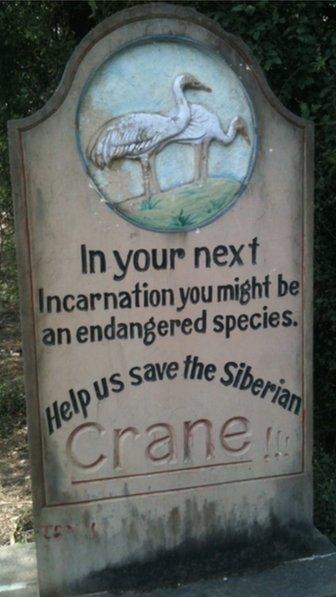
Interview by Simon Fraser. Photos by Akshat Dwivedi. Additional research by George Fraser.